Overview:
The mint in York was set up prior to the Viking invasions of England and coins continued to be produced there throughout the Saxon and Norman periods - with the Archbishop claiming rights to two dies until the late 13th century. The Royal mint at York was established for the recoinage in June 1279 to relieve the overworked London mint and to facilitate the exchange of new money¹. The mint closed a year later and while it was reopened for the recoinage of 1300 it never resumed its production of farthings.
The coinage of January 2, 1280 - July 1280 (Group II)
Farthings during this period were struck with a nominal weight up to 6.65 grains. A new indenture specified that 816 farthings were to be made from a
Tower pound of silver (up from 812 the previous year).
Previously farthings were only struck in
London, but to increase capacity, three regional "royal" mints were set up:
Bristol and York which produced farthings (as well as other denominations) and Canterbury which produced only pennies at this time.
Date: 1279-80
Mint: York
Keeper of the Exchange: John Sampson & John le Specer (former city mayors)¹
Type: 7
Diameter: 13mm
Weight: 0.25 - 0.47g (6¾ grains²)
Obverse: +EDVVARDVS REX
Smaller face with a new crown that has spearheads
between the fleurs. Tall side fleurs. Straight bottom to
band of crown. No punctuation.
Reverse: CIVI TAS EBO RACI
"Long Cross" with three pellets in each quarter.
Reference(s):
W.7
S.S1454
N.N1052
Fox. Group II
Scarcity: Rare
Guide Price:
£25 (Fine)
£40 (Very Fine)
Date: 1279-80
Mint: York
Keeper of the Exchange: John Sampson & John le Specer (former city mayors)¹
Type: 7a
Diameter: 13mm
Weight: 0.25 - 0.47g (6¾ grains²)
Obverse: +EDVVARDVS REX
Crown from a damaged punch. Smaller face with a new crown
that has spearheads between the fleurs. Spearheads small,
weak or missing. Tall side fleurs. Straight bottom to band of
crown. Face weak with "startled" pellet eyes added. No
punctuation.
Reverse: CIVI TAS EBO RACI
"Long Cross" with three pellets in each quarter. Unbarred A.
Reference(s):
W.7a
S.S1454
N.N1052
Fox. Group II
Scarcity: Rare
Guide Price:
£25 (Fine)
£40 (Very Fine)
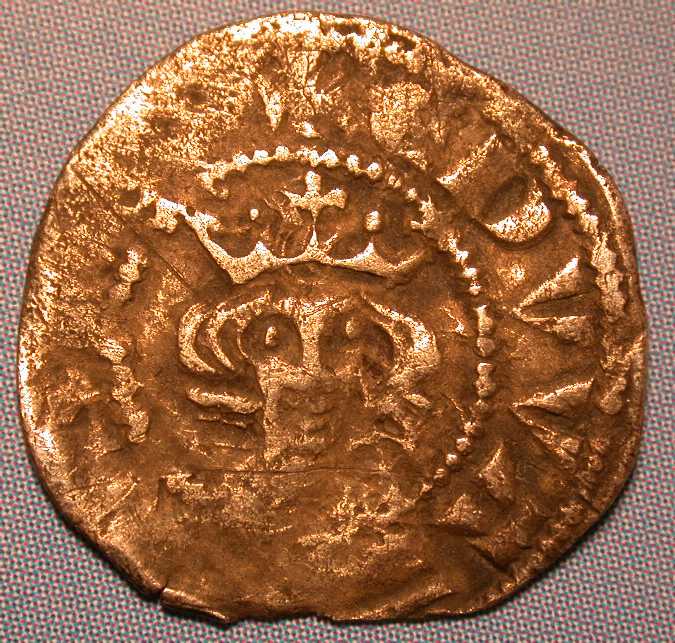
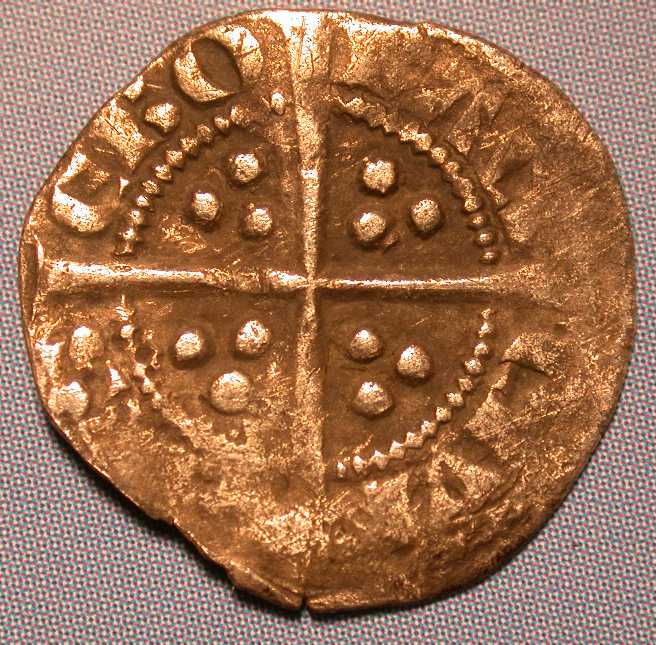
Date: 1279-80
Mint: York
Keeper of the Exchange: John Sampson & John le Specer (former city mayors)¹
Type: 7b
Diameter: 13mm
Weight: 0.25 - 0.47g (6¾ grains²)
Obverse: +EDVVARDVS REX
Crown from a damaged punch - but pellets added to the crown
to replace the missing spearheads. Smaller face with a new crown
that has spearheads between the fleurs. Tall side fleurs.
Straight bottom to band of crown. Face weak with "startled"
pellet eyes added. No punctuation.
Reverse: CIVI TAS EBO RACI
"Long Cross" with three pellets in each quarter. Unbarred A.
Reference(s):
W.7b
S.S1454
N.N1052
Fox. Group II
Scarcity: Rare
Guide Price:
£25 (Fine)
£40 (Very Fine)
Sold by:
-
(Jan '03) A fine example of this coin (photo above) was sold by "castlesteads" on eBay for £72.
The coinage of c.July 1280 - c.December 1280 (Group IIIc)
If Edwards' recoinage was to be a success, an enormous quantity of new coinage was required to replace the long cross coinage which was demonitised in August 1280. This vast output required the production of new dies on an almost daily basis, resulting in a gradual modification of the coinage over time. A new regional "royal" mint was established at
Lincoln, and while the production of farthings was not expressly prohibited at Lincoln, no farthings from this mint have been found. The regional mints remained active until December 1281.
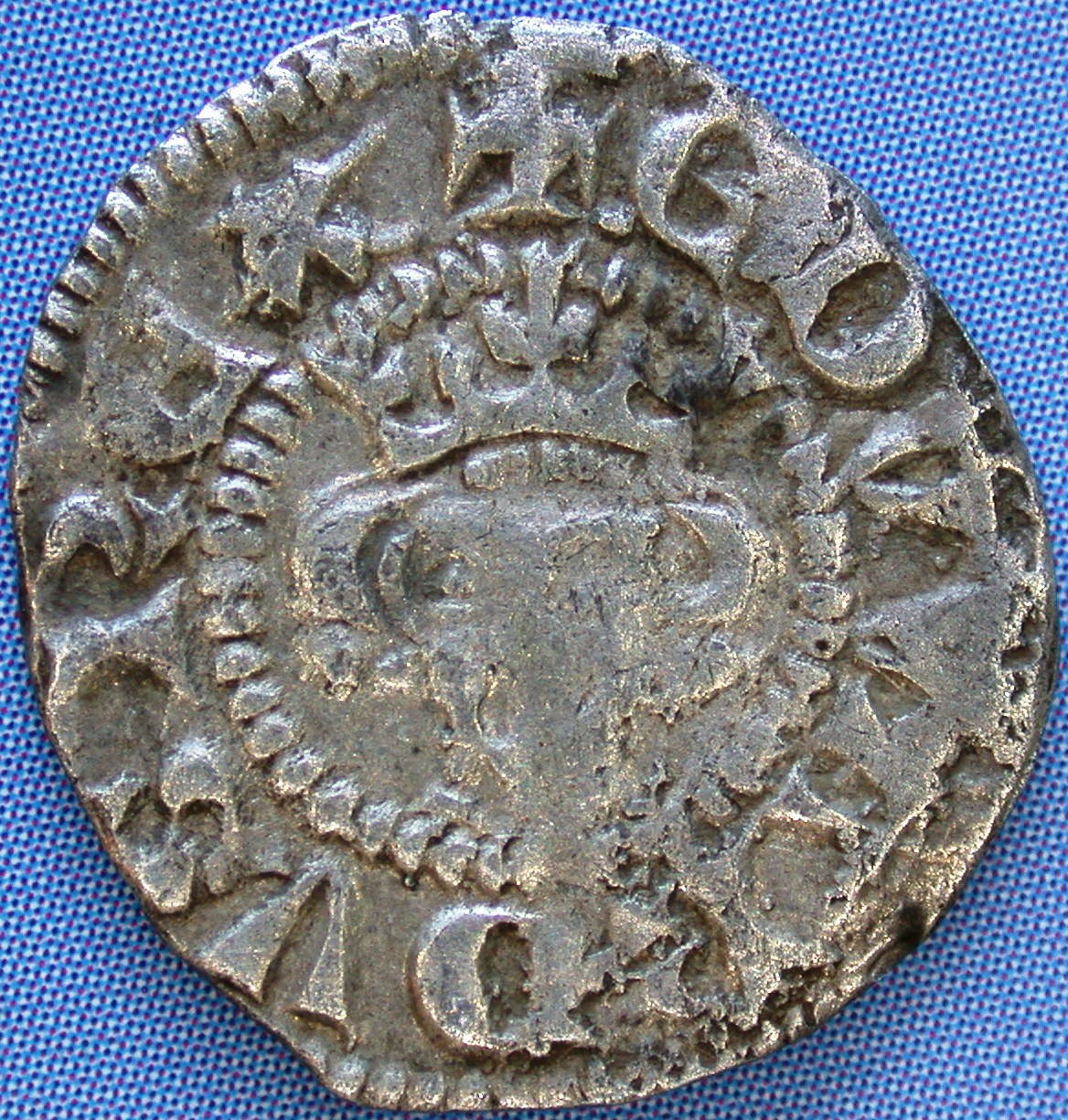
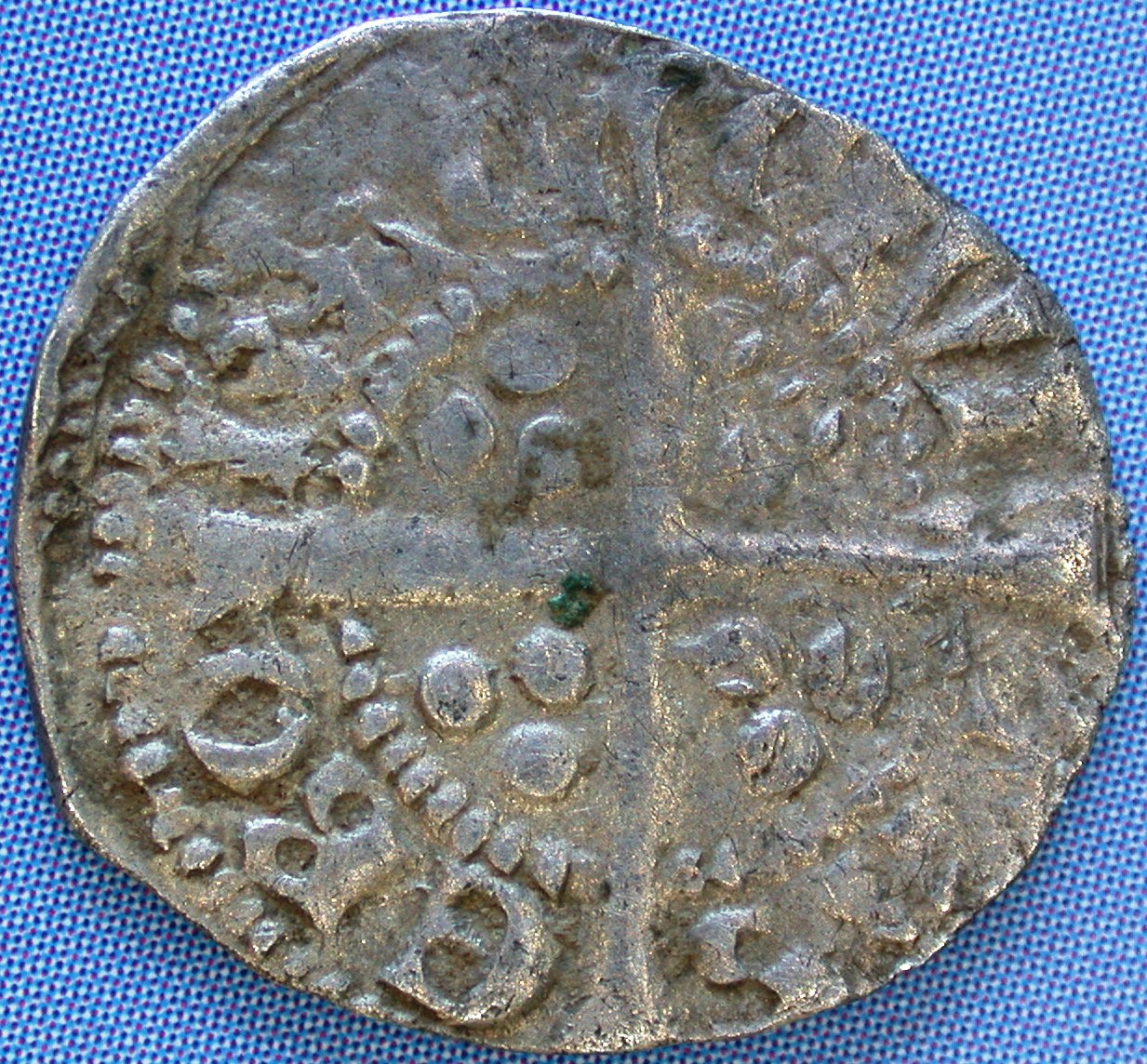
Date: 1279-80
Mint: York
Keeper of the Exchange: John Sampson & John le Specer (former city mayors)¹
Type: 8
Diameter: 13mm
Weight: 0.25 - 0.47g (6¾ grains²)
Obverse: +EDVVARDVS REX
Bust has wide forehead with tapering cheeks. Crown has spearheads
between shorter side fleurs. Central petal of right fleur
curves in. Curved bottom to band of crown. No punctuation.
Reverse: CIVI TAS EBO RACI
"Long Cross" with three pellets in each quarter. Normal N's.
Reference(s):
W.8
S.S1454
N.11053/1
Fox. IIIc
Scarcity: Rare
Guide Price:
£25 (Fine)
£40 (Very Fine)
The coinage of c. Christmas 1280 - Autumn 1281 (Group IIIde)
In late December 1280 it was declared that any new farthings were to be made from sterling silver. Previously, all farthings had a certain amount of alloy added to the silver to make the coins larger for convienient use, but from a monetary point of view, the alloyed silver issue proved unpopular. Without the added weight of the alloy, these new farthings were lighter than the previous issues, with a nominal weight of only 5.51 grains
This issue of farthings was also produced at the regional "royal" mints of
Bristol,
Lincoln and
Newcastle.
Date: 1280-81
Mint: York
Keeper of the Exchange: John Sampson & John le Specer (former city mayors)¹
Type: 10
Diameter: 11mm
Weight: 0.33g (5½ grains²)
Obverse: +E R AN GLIE
Crown as Types 8-9, with bust to edge of flan. Both A & N barred.
Reverse: CIVI TAS EBO RACI
"Long Cross" with three pellets in each quarter.
Reference(s):
S.1454
N.1053/2 Class 3de
Fox. IIIde
Scarcity: Rare
Guide Price:
£100 (Fine)
£300 (Very Fine)
Can't find your coin?
¹ MATE, M. 1972: Monetary Policies in England, 1272-1307 (BNJ 41) pp
79
² SEABY, BA. (ed) 1948: Notes on English Silver Coins 1066-1648 to
help collectors in their classification (London, Seaby). pp 87
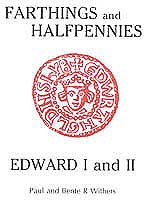





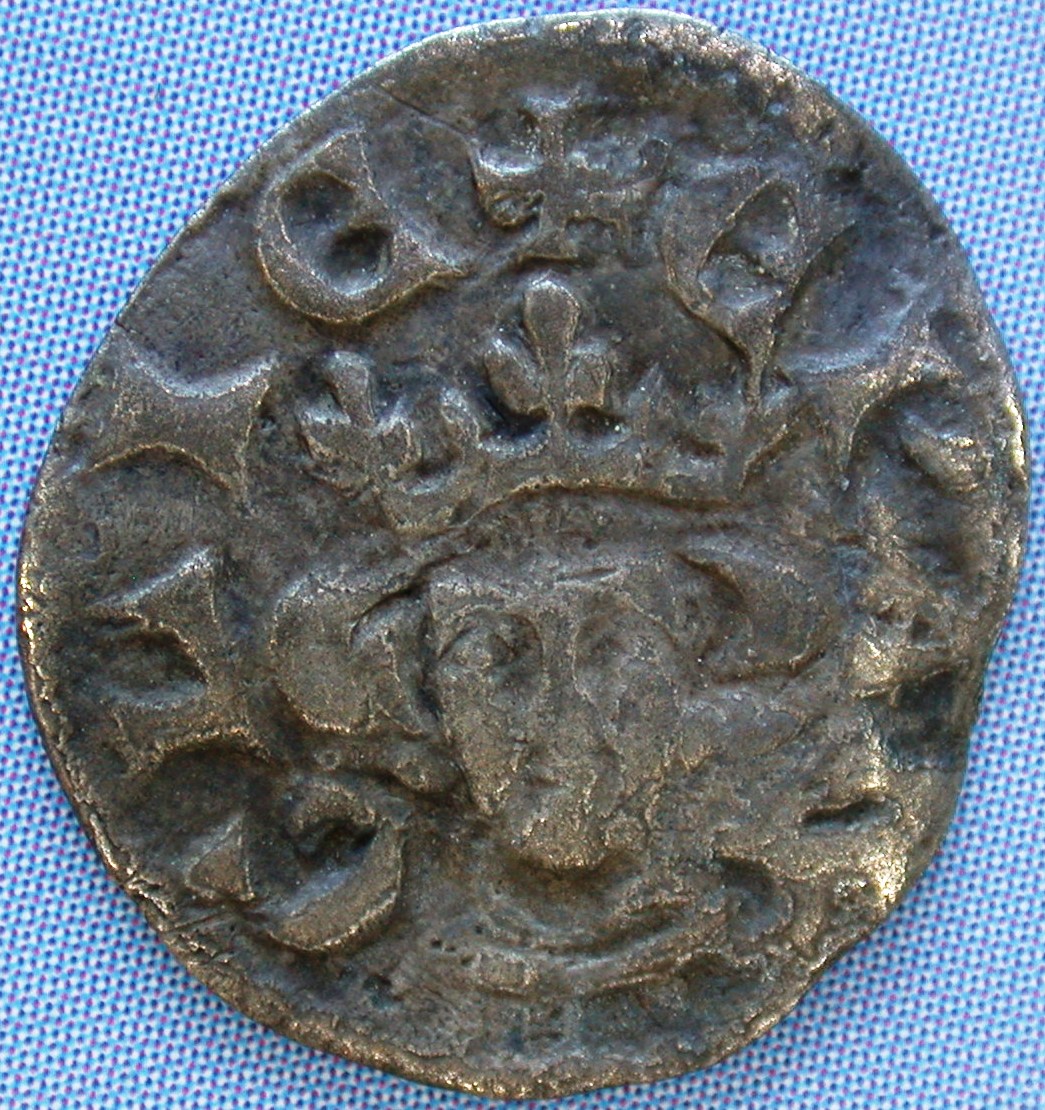
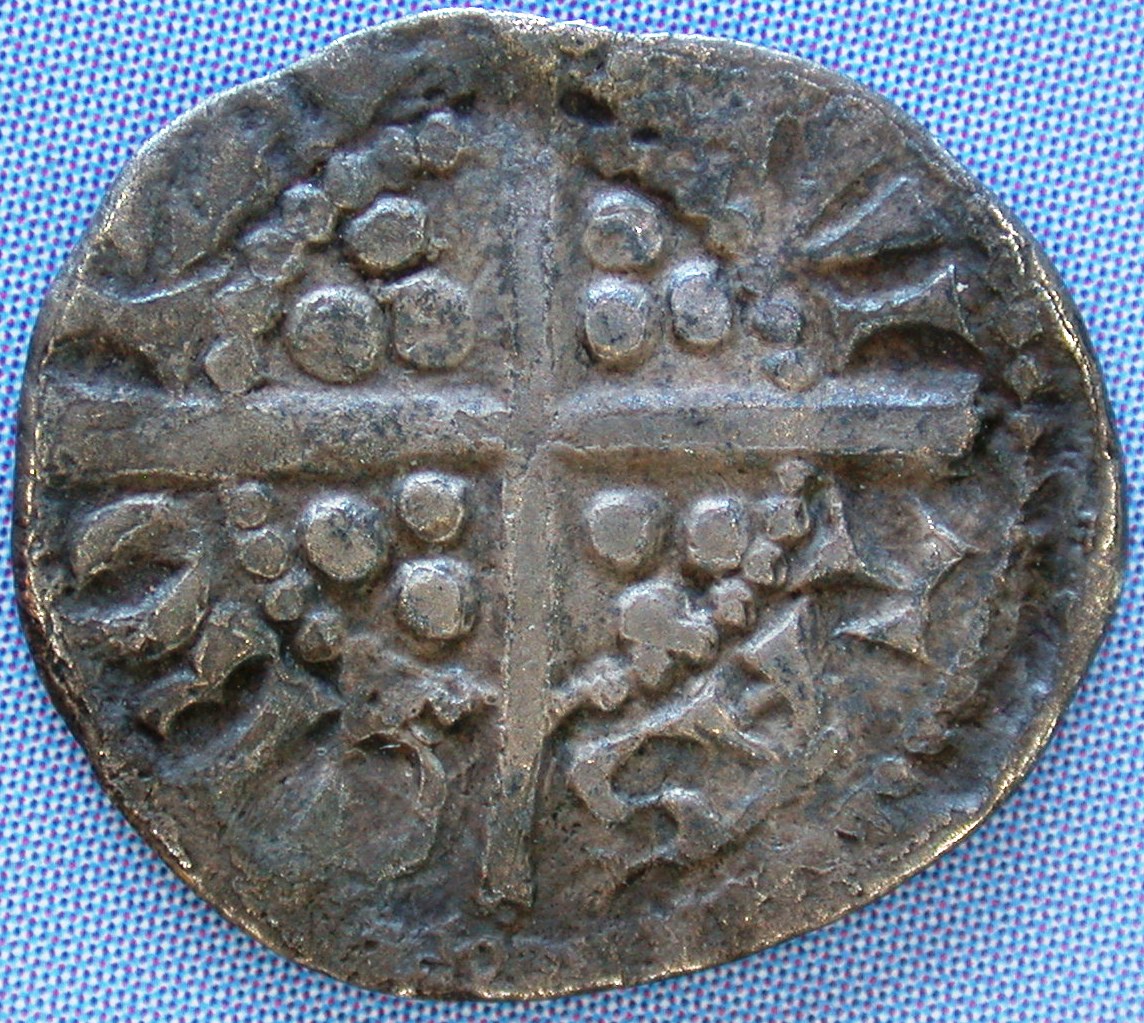

![Validate my RSS feed [Valid RSS]](../valid-rss.png)